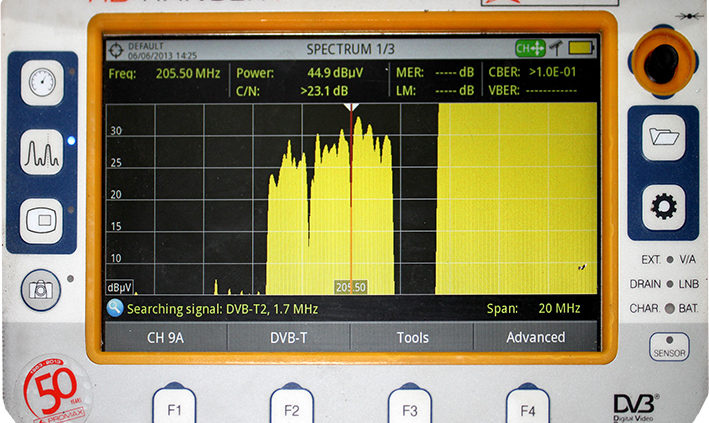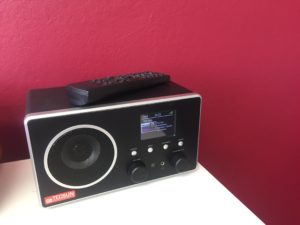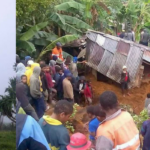What is Digital Audio Broadcasting + (DAB+) Radio?
Digital Audio Broadcasting or DAB+ as the name implies is a new digital audio broadcast technology used to provide terrestrial radio services. DAB+ offers a user experience resembling internet streaming or listening to a podcast but without a potentially costly internet connection.
“DAB + effectively bridges the gap between broadcast and digital technology to efficiently provide high quality audio to the audience without impacting their data downloads.”
DAB + radio, is the most widely adopted digital radio standard worldwide, on air in more than 40 countries, including Australia, Germany, Italy, Switzerland, France and Norway to name a few. Increasingly as DAB + garners greater popularity there is widespread interest in rolling it out in the Asia Pacific and Southern Africa, as well as aiming to develop DAB + in regional and rural areas.
Furthermore, DAB+ lowers the barriers of new radio stations by offering a collaborative platform where broadcasters can partner to get their content on the air. DAB+ offers a dramatically increased number of radio stations and genres for listeners to tune into.
What are the benefits of DAB+ Broadcasts?
The promise of DAB+ is greatly improved audio quality and vastly improved reception characteristics when compared to traditional FM and AM broadcasts.
The broadcasting of AM occurs through the use of “longer wavelengths in the medium bands which allows for the signal to travel further.” However, to the detriment of AM, the band suffers interference, particularly when the signals come into contact with dense urban areas.
FM reception suffers from reflections caused by buildings and metal objects, particularly in a mobile situation, this results in a characteristic called “picket fencing” where the reception chops in and out, a very undesirable characteristic.
To combat the problems associated with AM and FM reception, DAB + uses a “far more advanced and technically robust transmission system and operates in Australia in VHF Band III (Ch9A/9B/9C). To overcome interference, DAB + uses a robust modulation which is “designed for radio reception in mobile environments, such a vehicles and public transport.”
Recognising this advantage many traditional AM broadcasters are now simulcasting in DAB+.
There is also an economical advantage for broadcasters, as each allocated spectrum “Channel” can support 18 DAB+ channels, reducing the transmission cost.
Unlike AM or FM broadcasts that decrease in audio clarity depending on your distance from the transmitter, time of day, and geographical terrain, DAB+ offers ‘digital’ reception, listeners will have either a perfect user experience or no experience at all, mimicking that of digital television.
How can you listen to DAB+?
The exponential growth of DAB + Radio through 2017 and into 2018, can be epitomised where the number of DAB + radios in used in Australia rose to 3.8 million at the end of 2017, up 24%, from the previous 12 months. The increase in use of DAB + can also be seen where 56% of new cars sold are now fitted with DAB + radio.
Tecsun Radios Australia has released its first DAB+ radio the Apogee DAB+ Digital FM Radio. The Apogee DAB+ Digital FM Radio is a desktop radio capable of listening to DAB+ and traditional FM broadcasts. Additionally, the Apogee DAB+ Digital FM Radio includes the ability to bluetooth pair with a device such as smartphone and the radio also supports auxiliary input of audio via a cable. Perhaps the most interesting feature is the ability to use an external antenna to improve DAB+ reception. DAB+ transmission can be picked up with a band III VHF antenna oriented for reception of the vertical polarity, this extends the potential audience of DAB+ to people living outside of the current reception areas listed below.
https://www.tecsunradios.com.au/store/product/tecsun-d-008-dab-digital-radio/
Where can you listen to DAB+?
DAB+ is being rolled out progressively, today you can listen to DAB+ in the following list of Australia cities with more locates being added to the list every year:
- Sydney
- Melbourne
- Brisbane
- Adelaide
- Perth
- Hobart
- Canberra
- Darwin
Here is a link, which is useful in finding stations of DAB + in the cities listed above. You can also listen live through this link. Find stations through the search bar on the right hand side of the website.
http://www.digitalradioplus.com.au/listen.aspx?region=Hobart
The recent installation of DAB + radio in Hobart, now gives individuals access to more stations, particularly SBS and ABC stations. Use the link above to find these stations.
Where can you find DAB+ in the future?
Over the next five years, DAB + intends to extend their broadcasting capacity into 13 regional centres. Some of these regional centres include
- Dubbo
- Goulburn
- Newcastle
- Albury
The extension of DAB+ into these regional areas can be highlighted where “Radio is the leading audio platform consumed by Australians with 85% of people having listened to an AM/FM or DAB+ radio station on average in a week.” This is in comparison to Spotify 21%, Podcasting 10%, Pandora 8%, Apple Music 6%.
This is an image of the Apogee DAB+ Digital FM Radio used by Tecsun Radio’s. Get your DAB+ Radio today.
https://www.tecsunradios.com.au/store/product/tecsun-d-008-dab-digital-radio/







Will there be DAB+ in Albury by 2023????
Hi Walter.Yes Albury is scheduled to have DAB+. Whether or not it will be before 2023 remains to be seen.
Back in 2017 the Federal Government indicated that DAB+ would be expanded to regional areas within 5 years, yet in Wollongong the third largest in we have NO DAB+ and no indication that it will be introduced anytime soon.
So after losing the ABC short wave services 5 years ago it seems as though the “rapid expansion of DAB+ to the areas, is just a myth.
When will the Illawarra & Newcastle regions DAB+.
In 1918 it was indicated that DRM was being looked at for possible adoption for better national radio coverage but while New Zealand & Indonesia have forged ahead we have reached stagnation.
Is there really a Plan to actually introduce DRM to Australia ?
Please don’t give me a COVID excuse.
Regards
Eric FIEN